The haunting distinctive photographs of emigrant Richard Fitzgerald
When I began taking photographs of Ireland some forty years ago I felt an immediate connection with Irish emigrants in America, the thousands of people who had left the old country to begin a new life in Boston and New York. The landscape back home was dotted with abandoned stone cottages and derelict farmhouses. The desolation reminded me of my own departure. I was forced out of Ireland myself at the age of fourteen, wrongly accused of stealing a bottle of lemonade at a country crossroads dance. The consequences of that Sunday summer evening was the reason I left my homeland far too soon. I naturally sensed a strange affinity with those who had journeyed out before me.
All Irish emigrants of the old country keep some part of the homeland firmly in their memory, images of a time past that linger on in the mind exactly as we remember it, and held there forever unchanged. My own memories seemed to concentrate on the dark mysterious side of Ireland that I experienced in my youth, a time when many villages still had no electricity, and at night-time the homes were dimly lit with the calm flickering flames of candlelight and Tilly lamps. I remember too the small backroads where rural life was a daily struggle for both man and beast.
Some years after my sad departure from my homeland I took up photography and got a job as a ship’s photographer traveling the world on a luxury liner. Later I opened a studio in London photographing celebrities. Fifteen years passed before I plucked up the courage to venture home on a visit to Ireland – it felt as though someone might still tap me on the shoulder and ask me to leave again.
On my return home to Ireland I was immediately gripped with a strong desire to record a way of life that was fast disappearing – it was stealing away almost unnoticed in the rush of modernization. I wanted to capture the essence of that old world, celebrating its unfathomable beauty. Since I first took to the road with my camera back in the early 1970s, I have travelled to the remotest parts of Ireland, focusing on the dark underbelly of the land of my birth.
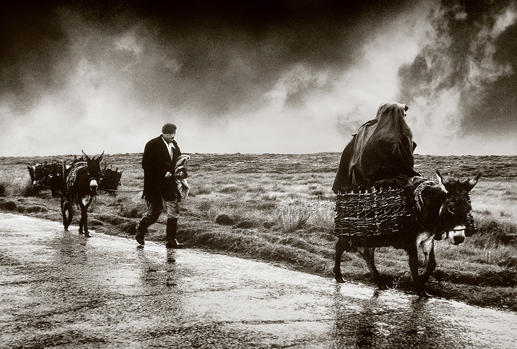
“The two men were drenched to the skin after a heavy downpour of rain, they looked pitiful, one man still sheltering under a sodden overcoat, the animals moved wearily with their heads lowered, the men too tired to speak to each other. On the day I took this photograph I had just read “The Painted Woman” by Liam O’Flaherty, a story which illuminates the harsh lifestyle of such men.”
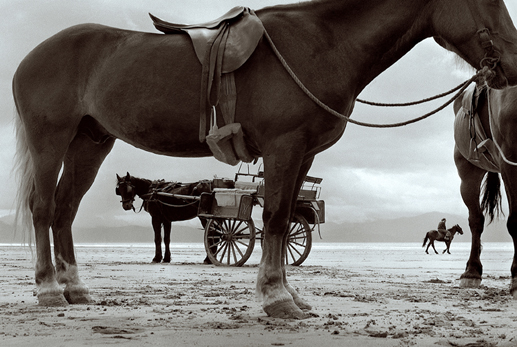
“The animals stand patiently waiting for their next customer while the rain clouds move in over the distant hills. I took this photograph early one morning after spending the night camping on the nearby sand dunes.”
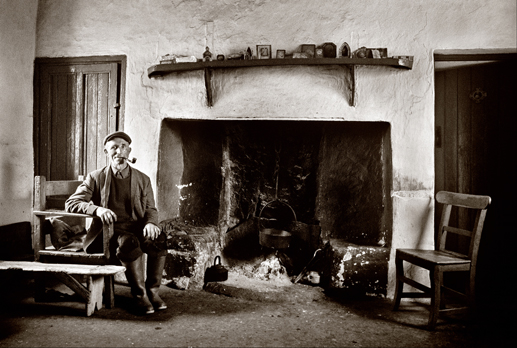
“I met him on the road as he returned home from a hard day’s work in the bogs, he spoke only in Irish but through our difficulties in communication I sensed his warm friendship. He invited me to his home and we drank tea together. When he lighted his pipe I asked if I could take a portrait of him with my camera.”
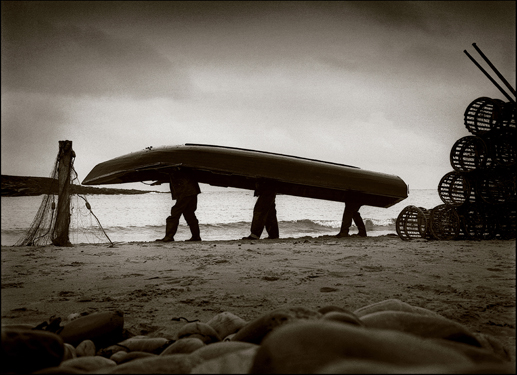
“Resembling a strange creature with six legs, the black upturned currach came crawling from the sea, the men swaying to and fro with the weight above their heads. I buried my Rollieflex camera amongst the wet stones to get the lowest possible angle of view against a rain-filled sky.”
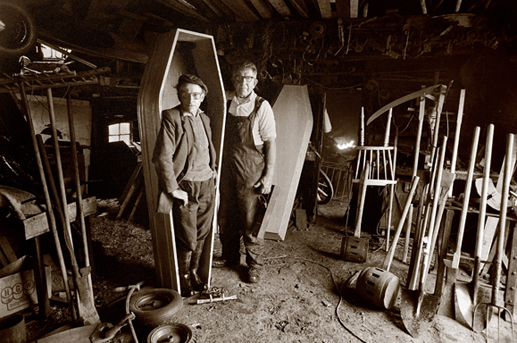
“A coffin-maker measures up a customer at his blacksmith’s forge, he was a highly respected craftsman in the community and repaired all manner of farm tools. He was also the local undertaker. I remember there was a cold rain outside, so I welcomed the heat and the sound of the bellows blowing the flames of the fire.”
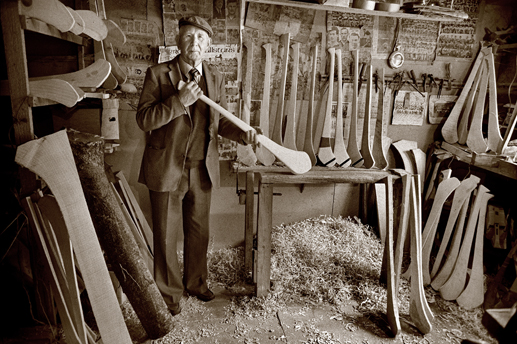
“John Joe O’Brien poses with one of his hand-made hurleys in his workshop at Cahir town, around him are the various states of his craft from the rough balk of wood to the finely finished hurley with its perfect weight and balance. Behind him pinned to the wall are pictures of famous teams, amongst them are men who were glad of his hurleys when they played in the all-Ireland at Croke Park in Dublin.”
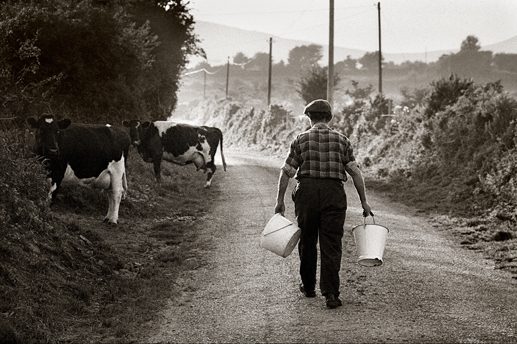
“I photographed this man as he approached his two cows at evening milking time. He frequently allowed his cows to graze on the lush grass by the roadside, in Ireland this free grass was often referred to as ‘The Long Acre’.”
_______________
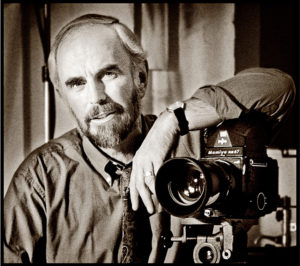 Photographer Richard Fitzgerald comes from Co. Waterford and now resides in London. For more information regarding his photographs, go to www.richardfitzgerald.com where you can view his Fine Art prints and posters. You can email him at studio@richardfitzgerald.com.
Photographer Richard Fitzgerald comes from Co. Waterford and now resides in London. For more information regarding his photographs, go to www.richardfitzgerald.com where you can view his Fine Art prints and posters. You can email him at studio@richardfitzgerald.com.

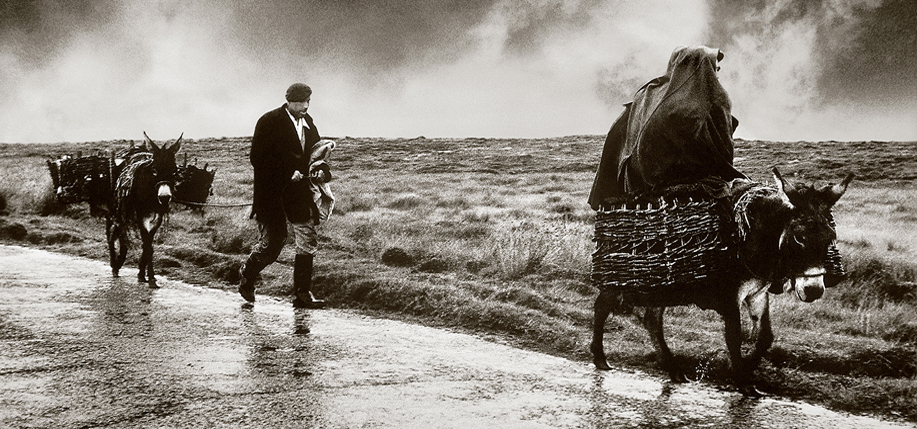
Great story and that first photo from Conamara is a masterpiece.